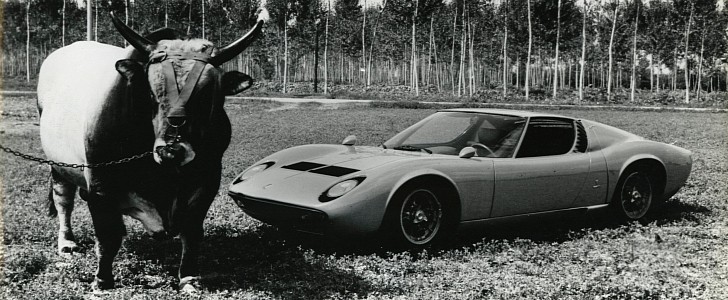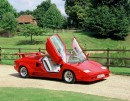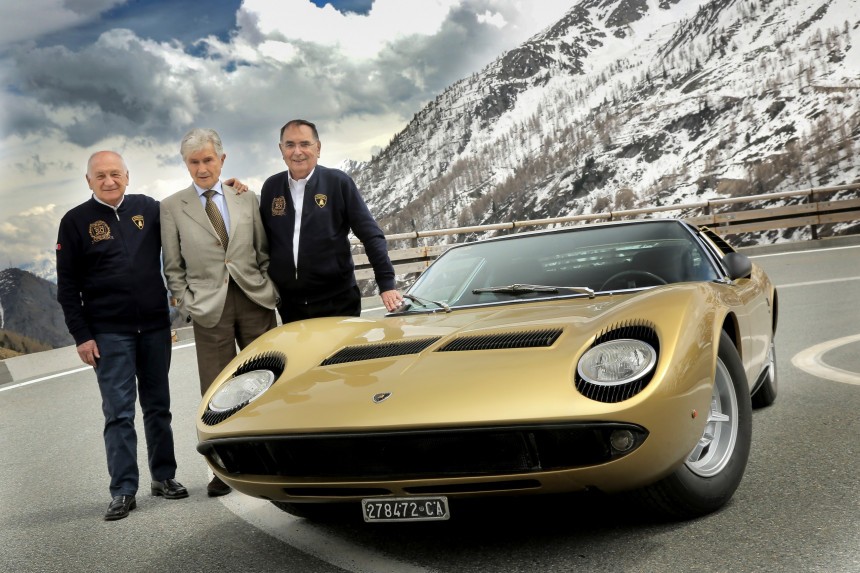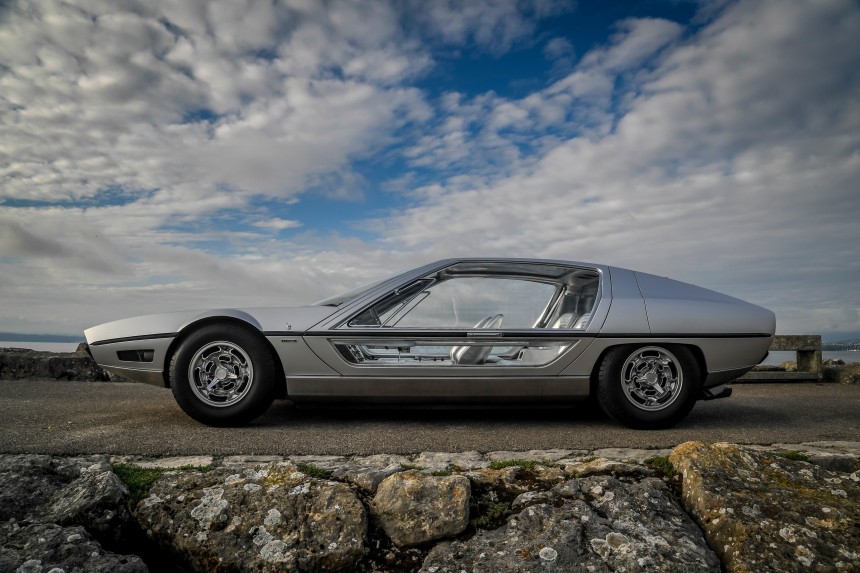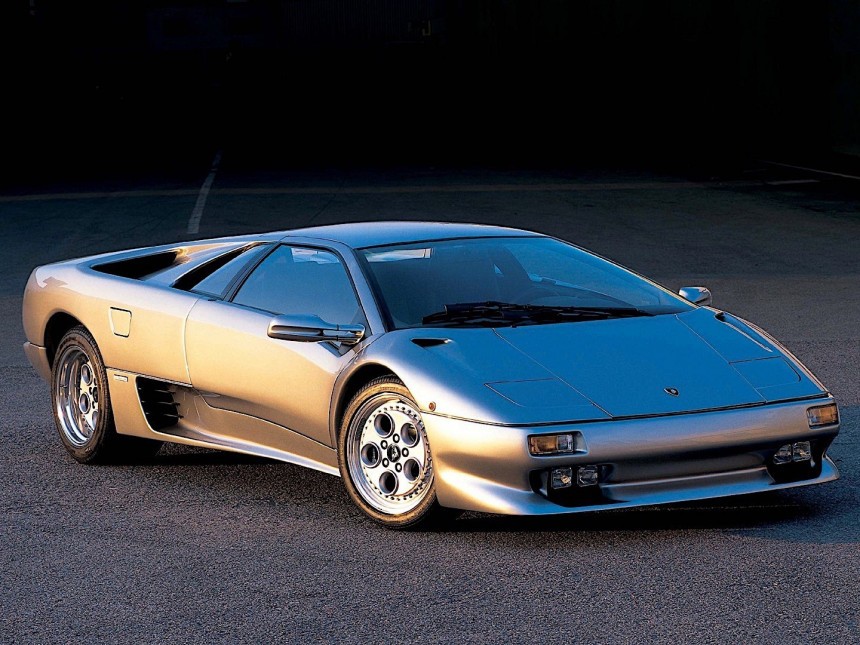The history of Automobili Lamborghini started in 1963 when it opened its doors in Sant'Agata Bolognese. Since then, from the lowest production road car to the first Super SUV, there have been many turning points and breakthroughs that have made the House of Sant'Agata Bolognese a symbol of Italian excellence in the automotive world.
Automobili Lamborghini is more than just the name of today's four-wheeled jewelry. Throughout its long time in the industry, Lamborghini gave us many iconic models that perhaps some of us may have forgotten about.
Back in the '60s, the main elements that sparked ideas in the minds of designers developing sports cars were the low height and aerodynamic curves. That's how designer Marcello Gandini and test driver Bob Wallace, as well as head engineer Gian Paolo Dallara, brought the Lamborghini Miura to life in 1966.
Miura was the lowest mass-produced car ever, with a height of only 105.5 cm (41.5"), a record that is part of Lamborghini's DNA and is mirrored in the cars we see today. Miura's first model was known as the P400. It was powered by a 3.9-liter V12 engine, which was also used in the 400GT at the time. At the time of its debut, it was the fastest production road car, delivering 350 hp at 7,000 rpm and a maximum speed of 161 mph (259 kph).
Out of the hands of Marcello Gandini also came out a design that would take the shape of the Marzal. Suitably named after a strain of fighting bull, the Marzal was developed with the goal of creating a four-seater grand tourer with a radical styling.
Some of the features that make the Marzal's design special are found at the interior, where upholstered in silver-colored leather, and the hexagon, which was replicated in as many elements as possible and is mirrored in the shape of the dashboard, the rear window, and the console cut-out.
The most eye-catching element, however, is the glass surface that covers 4.5 sq meters (48.4 sq ft) from the gull-wing doors to the roof. Because of this, the Marzal is considered to be a fully functional show car with the largest glass surface in automotive history. The Marzal was a one-off vehicle, although the general shape and many of its elements were eventually incorporated in the Lamborghini Espada.
A few years later, in 1971, Gandini designed one of the most legendary models that made the "Lambo-doors" and the sharply angled "Italian Wedge" shape popular: the revolutionary Countach. It was the first production car with vertical opening doors of this type, which are still a distinguishing feature of the House of Sant'Agata Bolognese's most powerful cars today.
The Countach was the model that put Lamborghini on the map of exotic supersport cars, and it was an iconic dorm-boy poster all over the world. It had the same engine as the Miura P400 (but it was placed longitudinally) and delivered 370 hp at 8,000 rpm.
More than a decade later, the Raging Bull crest was also put on one of the strangest and most fascinating vehicles at the time, the LM002, aka the "Rambo Lambo." It initially started as a project that focused mainly on building a high-performance off-road vehicle for military applications.
First unveiled at the Brussels Motor Show in 1986, the LM002 was an unusual departure for Lamborghini, which was mostly known for its high-performance sports cars. Born out of the Lamborghini LM 001 and Cheetah prototypes, it had a 5167 cc (315 cu-in) engine that produced 450 hp at 6800 rpm, outstanding off-road capability, and a design that highlighted its powerful lines.
After the Rambo Lambo made its public debut, the brand returned to its well-known sports car style and built on it. With the goal of developing a successor for the Countach, Lamborghini started to work on Diablo. Developed under Chrysler stewardship (after the American carmaker bought Lamborghini in 1987), it was launched in 1990 as a follow-up to the iconic Countach. It carried over the scissor-doors and still had a spaceframe chassis that was mostly unchanged. Heavier than its sibling, it was the first production Lamborghini capable of attaining a top speed in excess of 320 kph (200 mph).
In 1994, Chrysler sold Lamborghini to Malaysian investment group Mycom Setdco and Indonesian group V'Power Corporation. By 1998, Audi had purchased Lamborghini from its previous Southeast Asian owners and set out to modernize the Diablo, while the Murciélago, its successor, was being developed.
The Murciélago debuted in 2001, with an even more angular design by Luc Donckerwolke. It had a V12 engine that produced 572 hp at 7,500 rpm. In 2003, a roadster model was released, followed by a more powerful and redesigned LP 640 coupé and a limited edition LP 650–4 Roadster.
The final Murciélago variant was the LP 670–4 SuperVeloce, which was powered by the largest and final iteration of the original Lamborghini V12 engine. The Murciélago's production came to an end in 2010, and its successor, the Aventador, was presented a year later at the 2011 Geneva Motor Show.
Back in the '60s, the main elements that sparked ideas in the minds of designers developing sports cars were the low height and aerodynamic curves. That's how designer Marcello Gandini and test driver Bob Wallace, as well as head engineer Gian Paolo Dallara, brought the Lamborghini Miura to life in 1966.
Miura was the lowest mass-produced car ever, with a height of only 105.5 cm (41.5"), a record that is part of Lamborghini's DNA and is mirrored in the cars we see today. Miura's first model was known as the P400. It was powered by a 3.9-liter V12 engine, which was also used in the 400GT at the time. At the time of its debut, it was the fastest production road car, delivering 350 hp at 7,000 rpm and a maximum speed of 161 mph (259 kph).
Some of the features that make the Marzal's design special are found at the interior, where upholstered in silver-colored leather, and the hexagon, which was replicated in as many elements as possible and is mirrored in the shape of the dashboard, the rear window, and the console cut-out.
The most eye-catching element, however, is the glass surface that covers 4.5 sq meters (48.4 sq ft) from the gull-wing doors to the roof. Because of this, the Marzal is considered to be a fully functional show car with the largest glass surface in automotive history. The Marzal was a one-off vehicle, although the general shape and many of its elements were eventually incorporated in the Lamborghini Espada.
A few years later, in 1971, Gandini designed one of the most legendary models that made the "Lambo-doors" and the sharply angled "Italian Wedge" shape popular: the revolutionary Countach. It was the first production car with vertical opening doors of this type, which are still a distinguishing feature of the House of Sant'Agata Bolognese's most powerful cars today.
The Countach was the model that put Lamborghini on the map of exotic supersport cars, and it was an iconic dorm-boy poster all over the world. It had the same engine as the Miura P400 (but it was placed longitudinally) and delivered 370 hp at 8,000 rpm.
First unveiled at the Brussels Motor Show in 1986, the LM002 was an unusual departure for Lamborghini, which was mostly known for its high-performance sports cars. Born out of the Lamborghini LM 001 and Cheetah prototypes, it had a 5167 cc (315 cu-in) engine that produced 450 hp at 6800 rpm, outstanding off-road capability, and a design that highlighted its powerful lines.
After the Rambo Lambo made its public debut, the brand returned to its well-known sports car style and built on it. With the goal of developing a successor for the Countach, Lamborghini started to work on Diablo. Developed under Chrysler stewardship (after the American carmaker bought Lamborghini in 1987), it was launched in 1990 as a follow-up to the iconic Countach. It carried over the scissor-doors and still had a spaceframe chassis that was mostly unchanged. Heavier than its sibling, it was the first production Lamborghini capable of attaining a top speed in excess of 320 kph (200 mph).
The Murciélago debuted in 2001, with an even more angular design by Luc Donckerwolke. It had a V12 engine that produced 572 hp at 7,500 rpm. In 2003, a roadster model was released, followed by a more powerful and redesigned LP 640 coupé and a limited edition LP 650–4 Roadster.
The final Murciélago variant was the LP 670–4 SuperVeloce, which was powered by the largest and final iteration of the original Lamborghini V12 engine. The Murciélago's production came to an end in 2010, and its successor, the Aventador, was presented a year later at the 2011 Geneva Motor Show.
